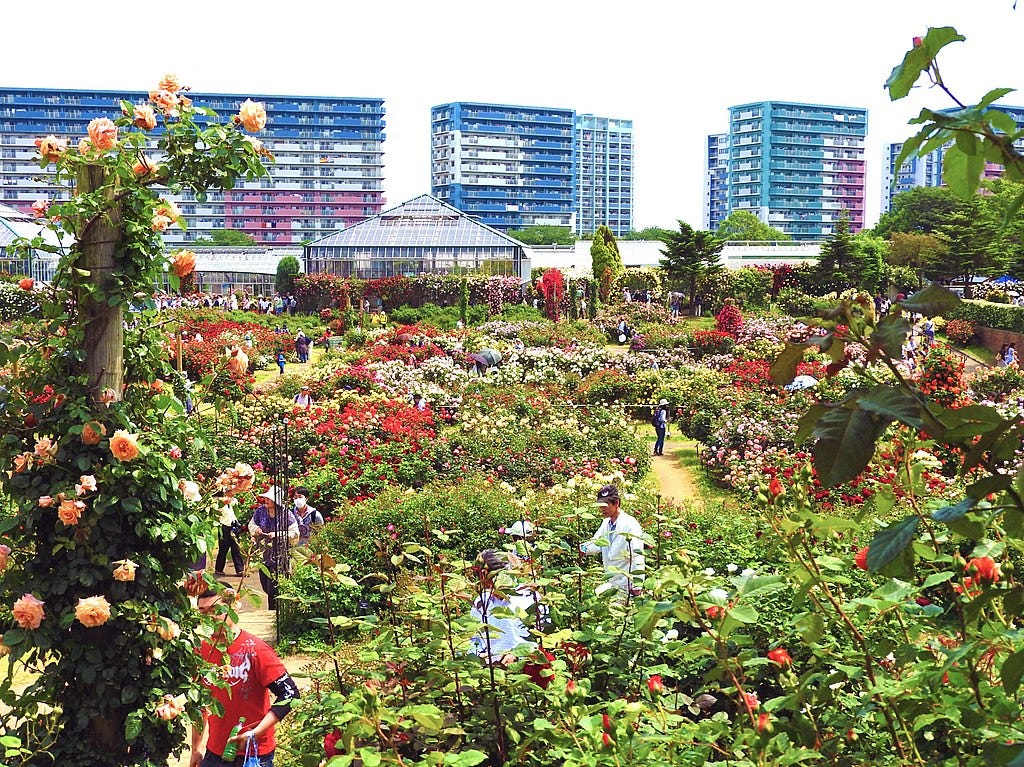Roses and Thorns in Yachiyo City
Yachiyo ranked as the 7th largest foreign population in Chiba Prefecture
Keisei Rose Garden, 京成バラ園 in Yachiyo City, photo Xser21
For the past few weeks, I’ve been preparing a presentation for Yachiyo City elementary students about my country of birth, Canada. The city is a bedroom community that has good access to Tokyo, Chiba City, and some attractions such as nashi pear orchards and the Keisei Rose Garden.
Yachiyo City’s response to the growing foreign population
As of 2022, the city ranks 7th in the prefecture for its population of foreign nationals, nearly 7000, growing annually by 10%. In response, Yachiyo City formulated a plan in 2021 to address the needs of the growing foreign population. The city recognizes concerns of the newcomers - housing, health care, education, and integration.
Misgivings about my presentation
While preparing my presentation, the thought of delivering it entirely in Japanese was not the only source of apprehension. I’m a reasonably fluent but not nearly native user of the Japanese language. I also worried about the thorny multicultural issues. I grew up in one of Canada’s diverse cities, Vancouver. My family is a case study - multiethnic and multilingual as a result of immigration and the collision of cultures. The latest statistics indicate that in Vancouver, my hometown, a little over 42% of residents there are foreign-born. When I was growing up there in the 1980s, my parents and grandparents often reminded me that I was their “number one”, the first second-generation kid in my multicultural family.
My family’s diverse cultural and immigration backstory
Would my presentation be a shock or confuse the kids? My talk briefly discussed Canada’s diversity, touching on the First Nations (not a monolithic ethnic group, but dozens of languages and cultures) and wildly diverse immigrant cultures. I explained that my parents were born in two different countries and experienced multiple cultures through their immigration journeys, and exposed the kids to Canada’s official languages, English and French.
Showtime
I was one of four foreign residents giving 45-minute presentations to the students at a Yachiyo City public elementary school. We got a warm welcome from the Assistant Language Teachers (ALTs), mostly middle-aged Filipino women, and a handful of school administrators and homeroom teachers. The homeroom teachers lent us their tablet computers so that we could display our PowerPoint and Google Slides presentations in PDF format.
I felt a little wave of nostalgia as nearly a decade ago, I was an ALT in elementary schools in another Chiba Prefecture community. My presentation riffed on a fellow participant’s presentation with a quiz element. The kids didn’t hold back - they offered their best guesses and often informed answers (in preparation for my visit, they had gleaned a lot online about Canada).
Reflections on the experience
On entering the classroom, I was immediately struck by the diversity of the kids. Each class had “visible minority” people, kids who appeared to be not ethnically Japanese, and a few appearing to be of mixed ethnicity. Some kids had roots in other Asian countries. One of the kids explained in English that she and her family are from Singapore and speak English at home.
Another thing that impressed me was that the learners were cool with a non-Japanese person like me doing their best in a Japanese language presentation. When I messed up pronunciation or expression, kids jumped in to repair my communication. I had worried about my fluency, but this thorn was pulled by the kids who were happy to help me out.
The next time I do a presentation, I intend to take more risks. After all, in the audience are kids who may be like me, culture-crossers exposed to different mother tongues and complicated cultural contexts. I hope they can put them at ease in their environment from my perspective as, a multi-ethnic Canadian kid. And I hope I can pique the interest of Japanese kids curious about the world.
For Chiba Prefecture residents who are conversant in Japanese, have time on their hands, and want to get involved, I recommend contacting the Chiba Convention Bureau and International Center to learn more about recruitment for foreign “demae” lecturers to public elementary and junior high schools. You could feel more at home while providing a face and a voice to your culture-crossing experience of Japan and showing ethnic Japanese and newcomer kids how they can see their places in Japan and the world.
My takeaway was that these kids, whether Japanese, bicultural, or newcomer, are all beautiful flowers. They’re as lovely as Yachio’s roses.






One of my daughters went to UBC. (The other to the University of Toronto). I’m originally from the U.S. but I feel like an honorary Canadian! It’s so great the students prepared by researching about Canada. お疲れ様!
Elizabeth, I’m glad you had such a positive experience and that the students were so obviously engaged as well as helpful. Your write up was very informative.
Your Tante Marianne just yesterday baked a “platz” for her granddaughter, Dakota, who was also celebrating multicultural heritage day at her elementary school.